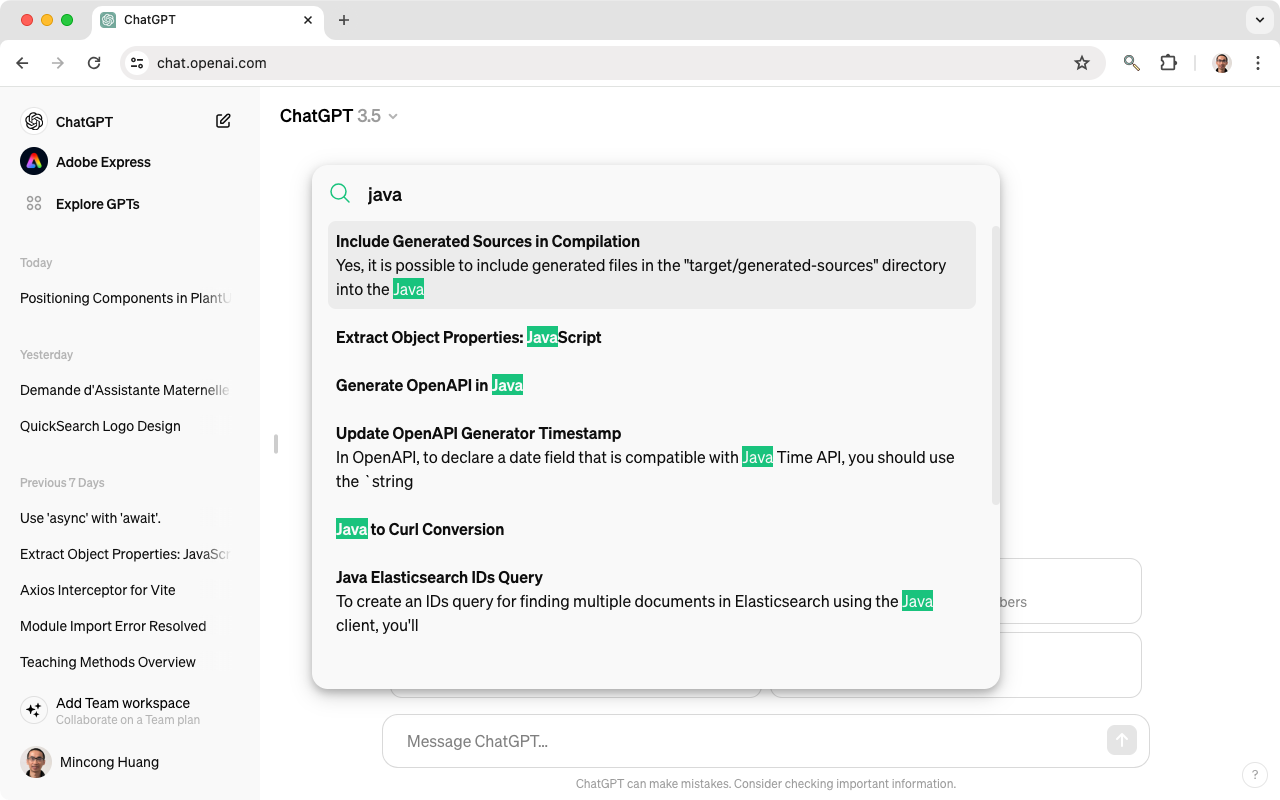Introduction
3 weeks ago, Cayenne and I made a user survey to study how people use ChatGPT and we were lucky to gather responses from 69 users. We got a lot of insights. I think you may be interested to know them as well. That’s why I am writing this blog post to share the results with you.
We have used Google Forms and Tencent Survey (腾讯问卷) to ask people questions, mainly for English-speaking and Chinese-speaking users. 72.4% of our participants are software engineers, researchers, or students in STEM (science, technology, engineering, and mathematics). Other profiles are UX/UI designer, consultant, product manager, data analyst, operations analyst, content writer, entrepreneur, etc. Most of the participants work in the software industry, research institutes, or consulting companies. Some of them are still studying at the university. 50% of the users are from China and 42.9% of the users are from France.
Users are willing to pay
45% of participants have paid for ChatGPT or related AI services. It means that AI brings real added value for most of the users. Among the 31 paid users, 27 of them (87%) pay for ChatGPT-4. The reasons depend on each user and there isn’t a clear pattern. Some people pay because they want to use Dall-E to generate images; some people pay because ChatGPT-4 allows them to upload files, such as images or PDFs, which reduces the time spent on prompt description; some people pay because ChatGPT-4 is faster, provides more details, or is more precise.
Besides ChatGPT, other services that users pay for are either large language models (LLMs) or application-level services built on top of LLMs. On the LLMs side, people pay for ChatGPT-4 and Midjourney. On the application side, people pay for GitHub Copilot, Azure GPT4, 3rd-party GPTs in OpenAI GPT Store, Poe, 美图秀秀AI, etc. For free AI services, people are using Hugging Chat, Claude, Mistral AI, and many others. However, none of these services is as popular as ChatGPT.
An essential tool for daily work
People use ChatGPT a lot. 34% of the users said that they use ChatGPT more than 10 times per day. It means that LLM has become a new tool in everyone’s work. It’s so useful that people just won’t stop using it. ChatGPT is popular for all ranges of users with different years of experience: no matter if it’s for students or professionals with 10+ years of experience, they just love using ChatGPT to solve their problems.
85% of the users ask questions related to their work in ChatGPT, while 36% of the users ask questions related to personal life and 33% of them ask questions related to personal growth. One user mentioned explicitly that he/she uses AI to polish the writing. As we can see, ChatGPT is a multi-purpose tool that can serve different areas.
ChatGPT is not perfect
In the survey, people complained about different things about ChatGPT. Some said the image generation was not as good as expected, e.g. the generated logo was close to the Western aesthetics; some said the context of the conversation was lost when the request details were too complex, and it also failed to memorize some code generated previously; some said that it has difficulty to understand the context, the same question needed to be asked in different ways to get a better answer; polishing letter or thesis is not as natural as expected, where readers may easily identity the content is generated by AI; the backend API of ChatGPT is not reliable enough: sometimes it failed to generate a long text result; etc.
Users have high expectations for ChatGPT
Users expressed a lot of expectations for ChatGPT. They expect it to handle multimedia (video, image, …) much better than its current capability in terms of precision, understanding, up-to-date dataset etc; they expect the voice feature to be more powerful than today to have a fluent conversation; they expect the performance of the LLM to be much better; they expect the answers to be more precise and be referenced to the source. Users also have a lot of ideas and expectations for domain-specific applications, e.g. research-related, writer-related, design-related, psychological-related, or coding-related applications, mainly to help them to solve problems in their domains.
The landscape is completely different in China
ChatGPT is not supported in China. The Chinese government also denies visits to OpenAI’s website. Therefore, users expressed a lot of difficulties in using ChatGPT. It requires using VPN to connect. The network is unstable, and even if a user is connected, some conversations cannot be continued. On the other hand, it creates an ecosystem that is completely different from other countries as well. People are using alternatives for AI services, such as Kimi Chat, 通义千问, 文心一言.
Building quick search for ChatGPT?
Based on the popularity of ChatGPT, users’ high intensity of usage, the mix of content between professional and personal aspects, the multimodal of LLM (text, files, voice, …), and the expressed needs from users’ feedback, we believe that building an in-app search feature is a good opportunity to give users full visibility into every part of the application, for the conversations, images, and even settings. That’s why we are building ChatGPT QuickSearch Extension, a Chrome extension to allow users to quickly access every conversation using CMD+K.

If you are interested in using the service, you can contact mincong.h[at]gmail.com to have early access for free. You can also visit the product page for more details.